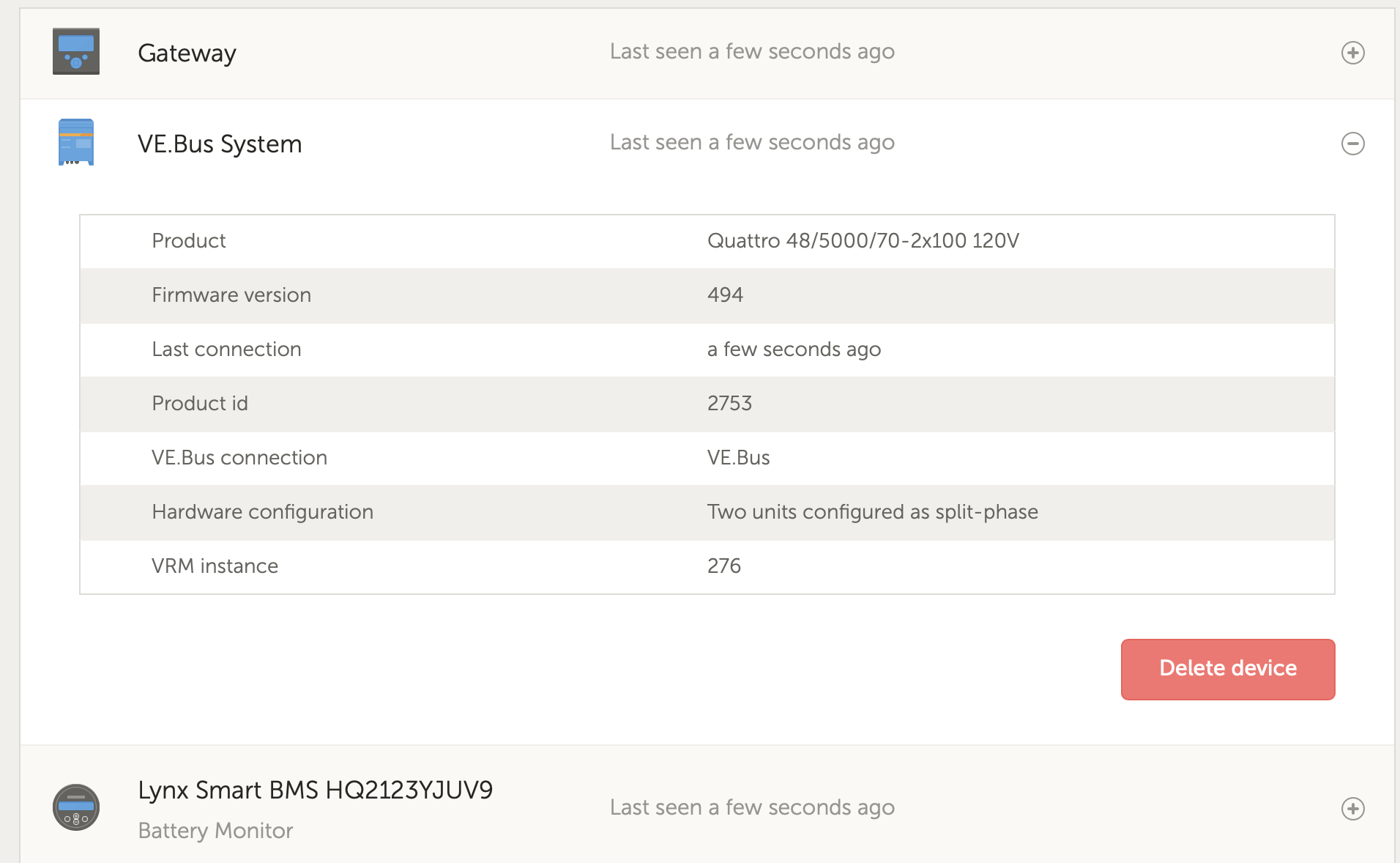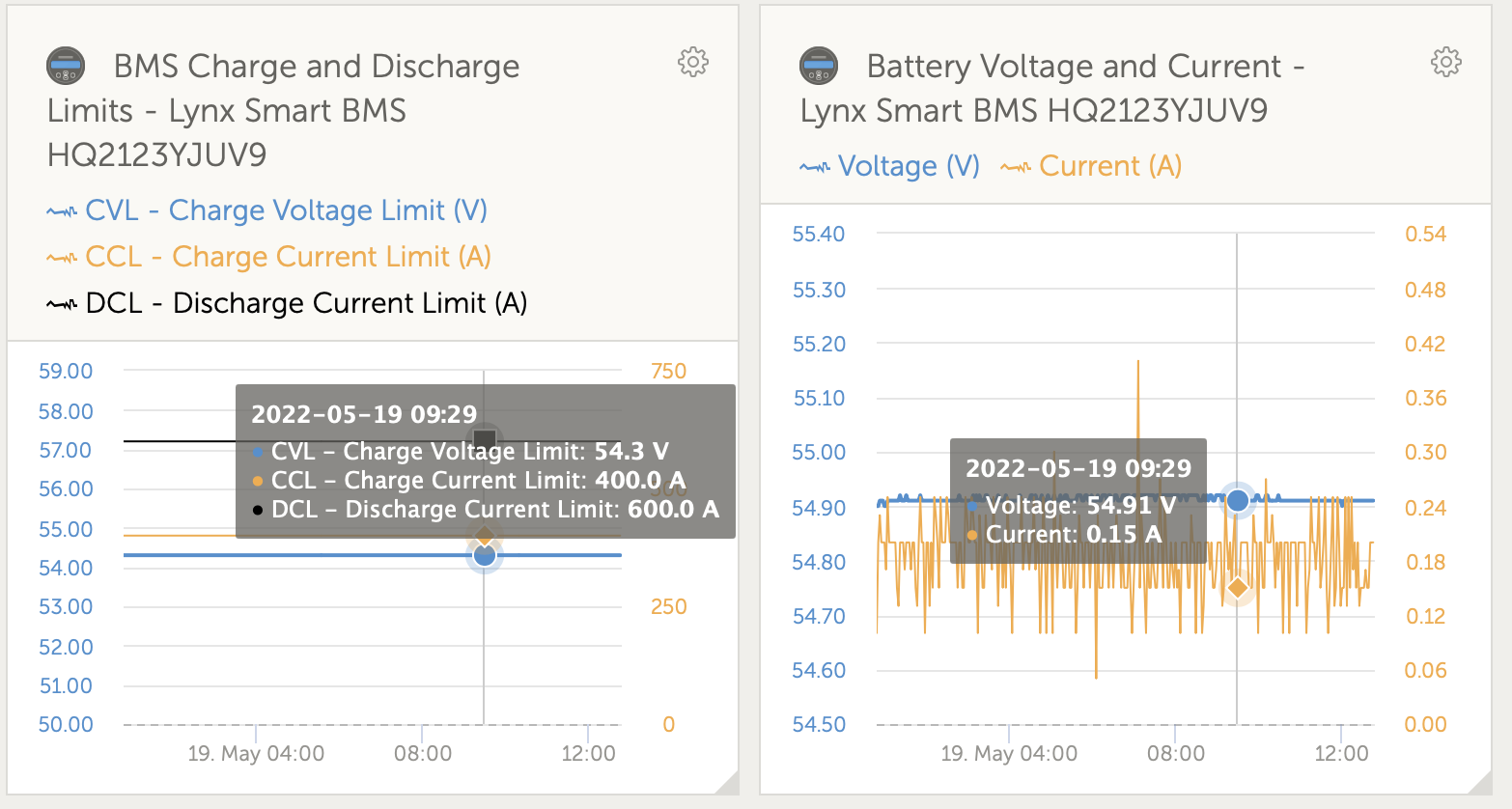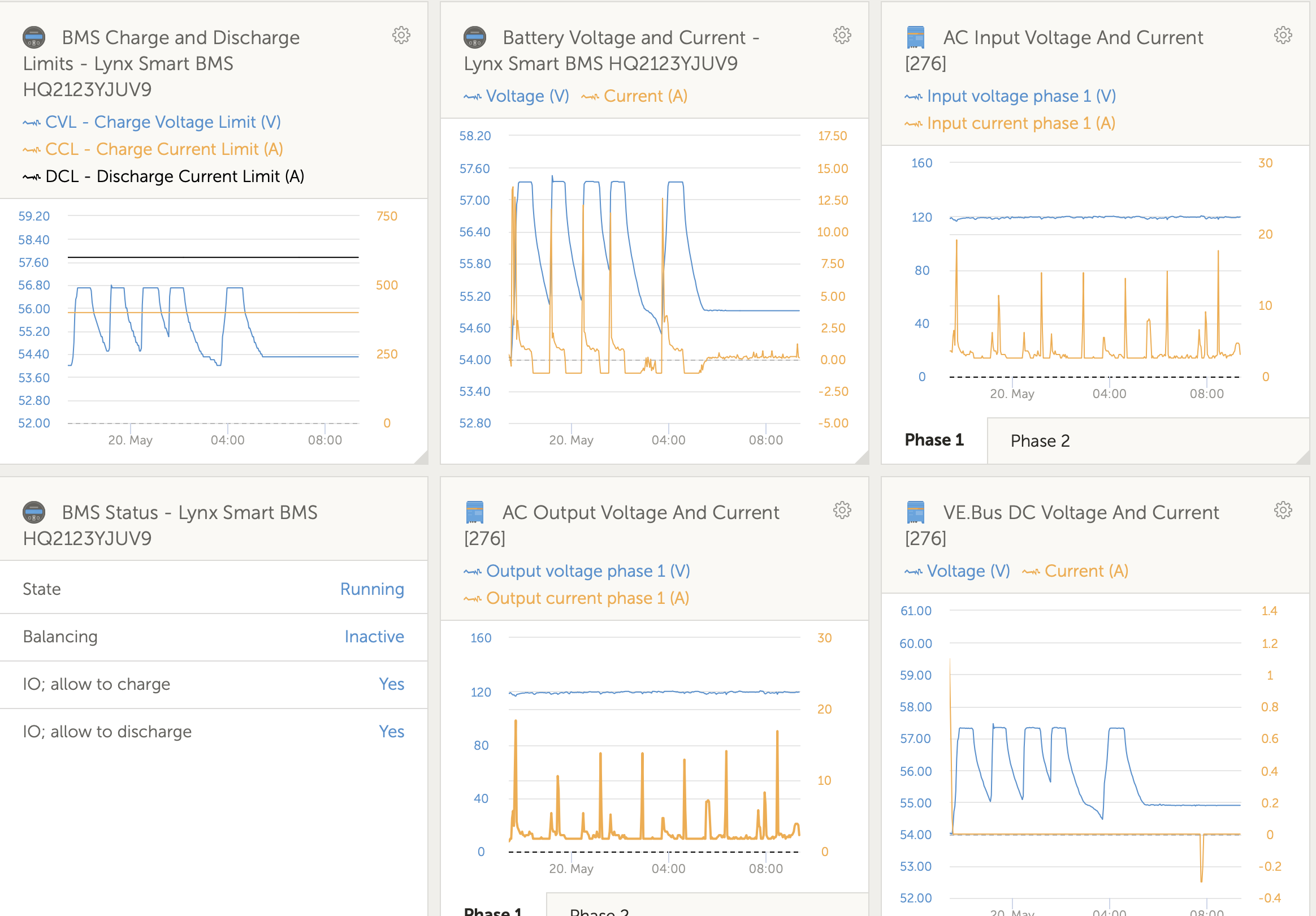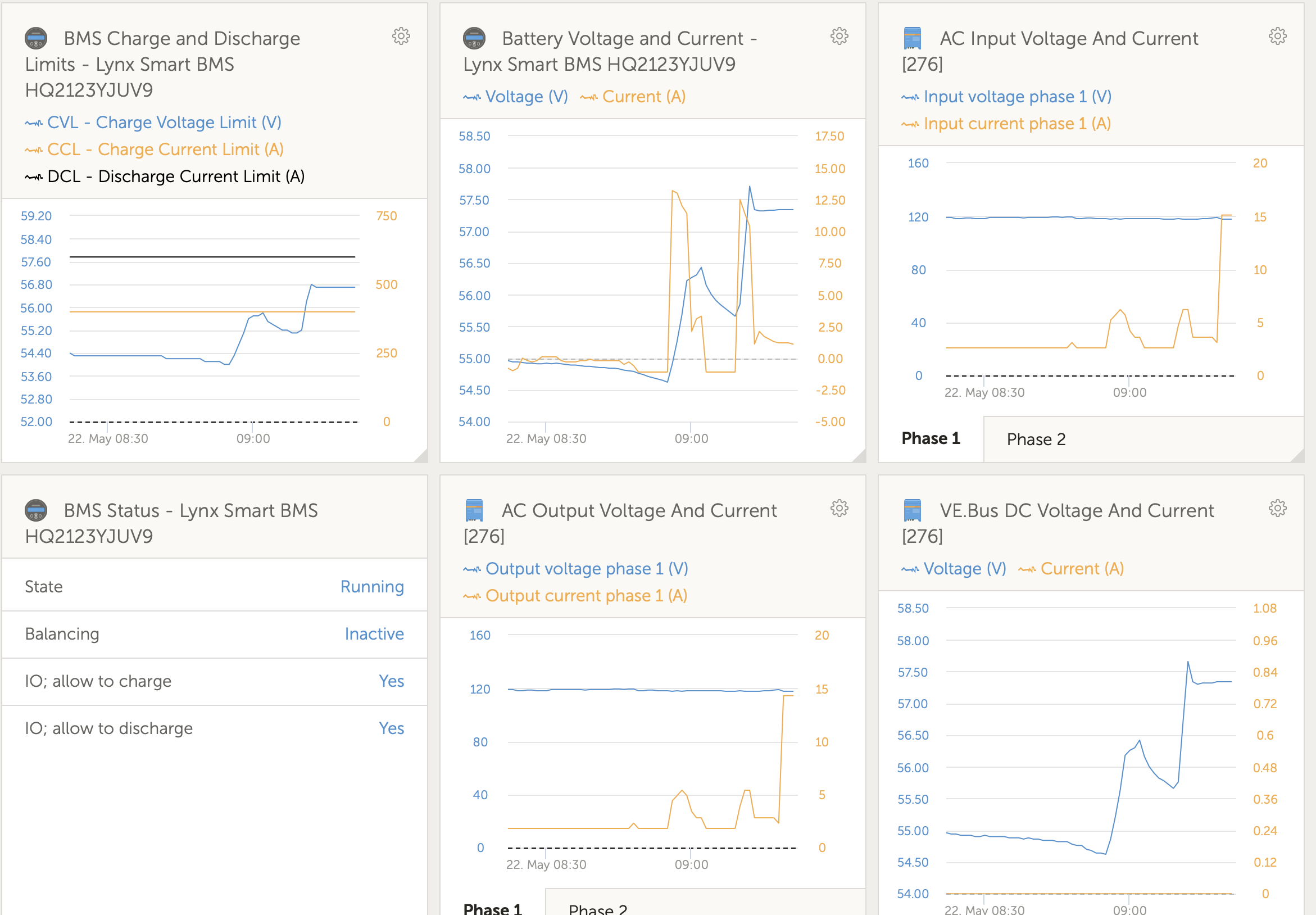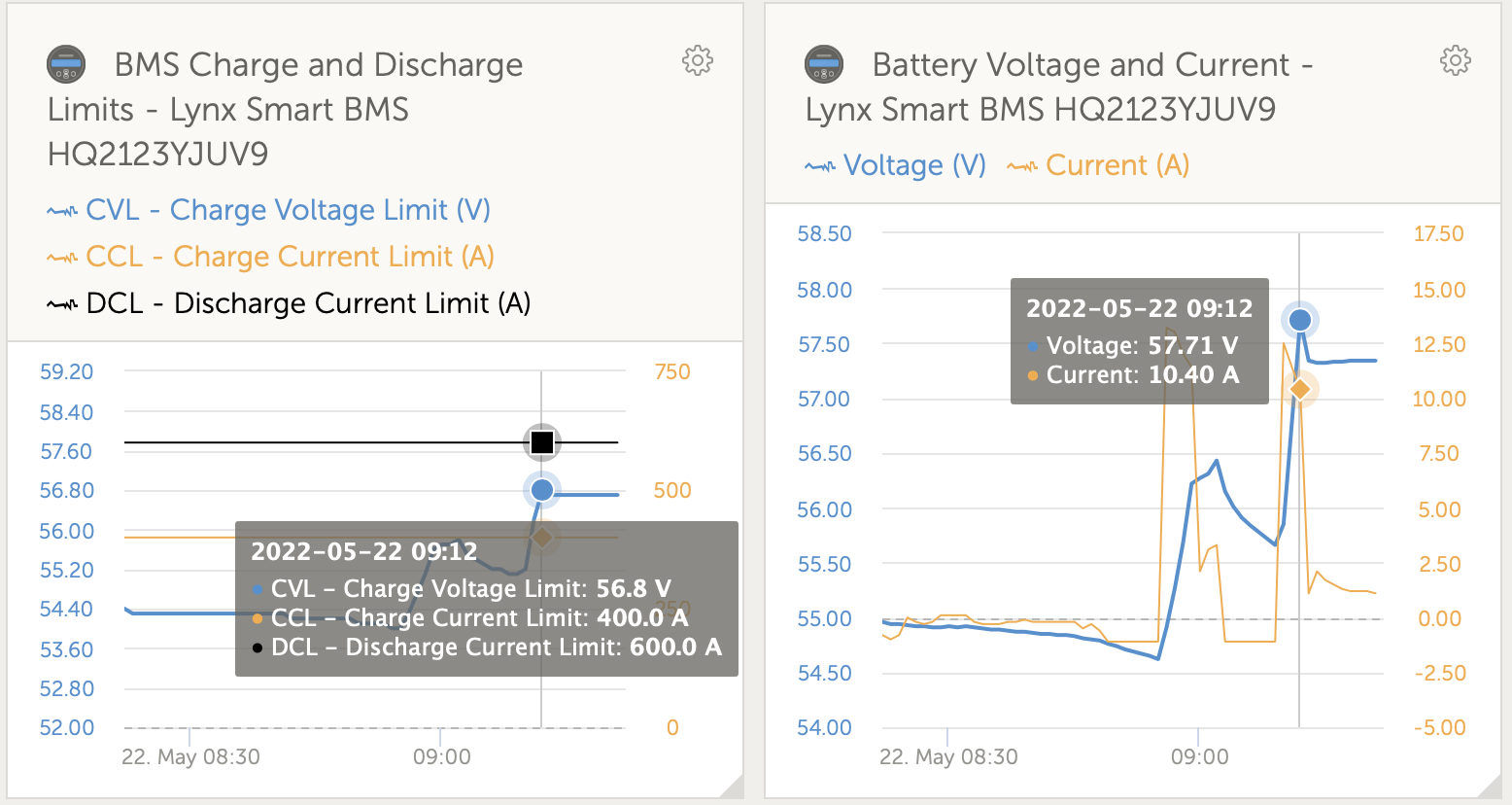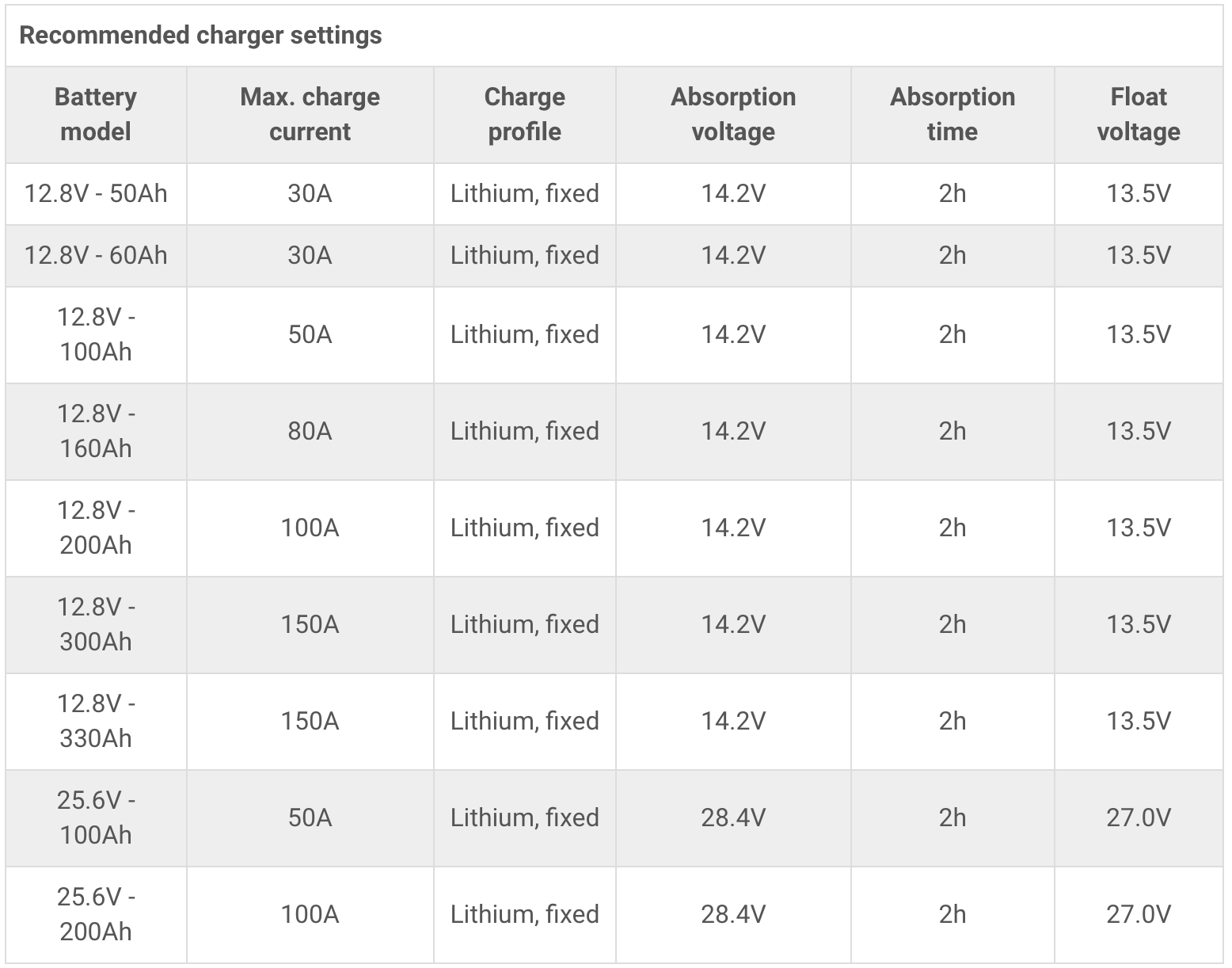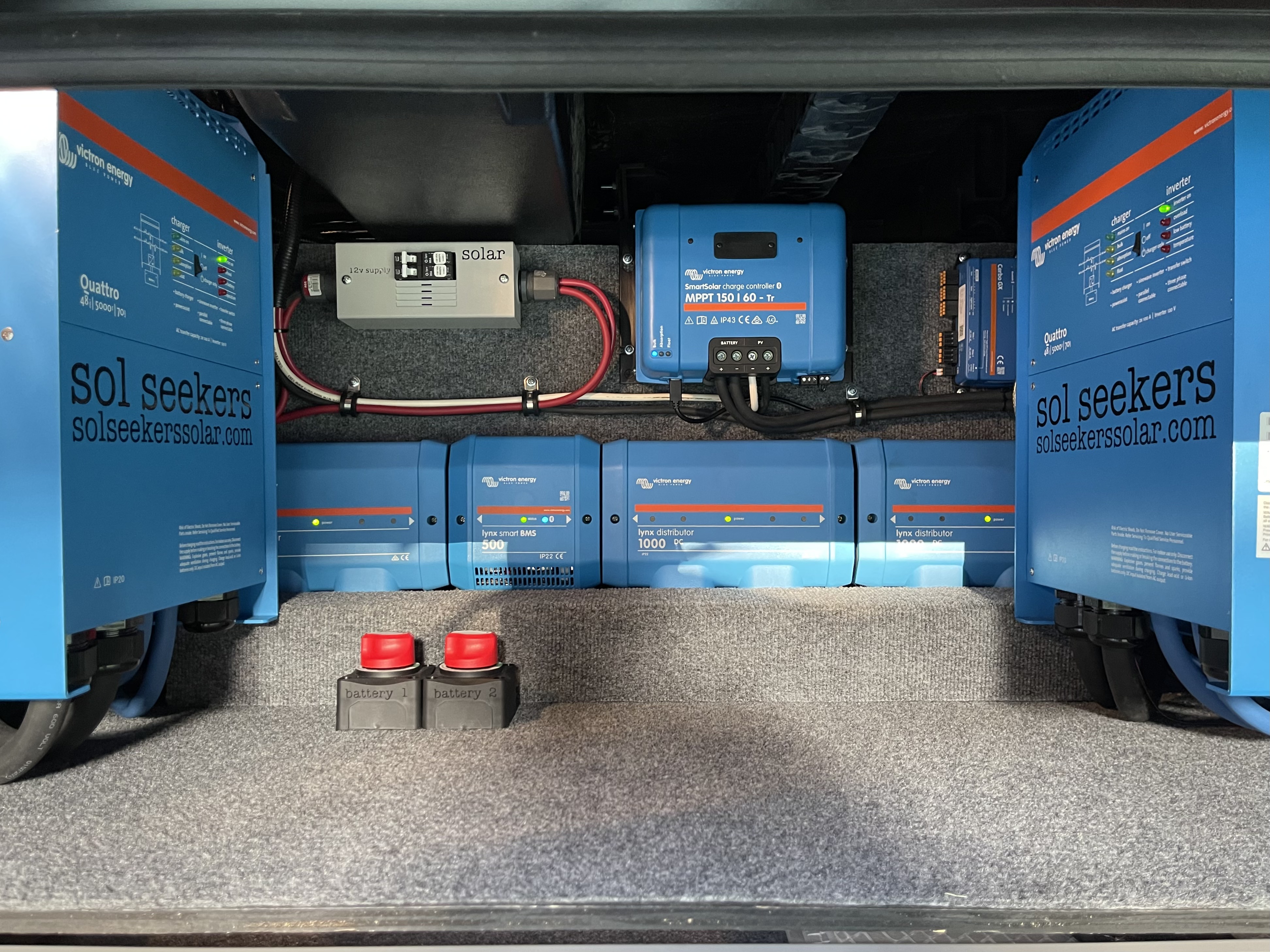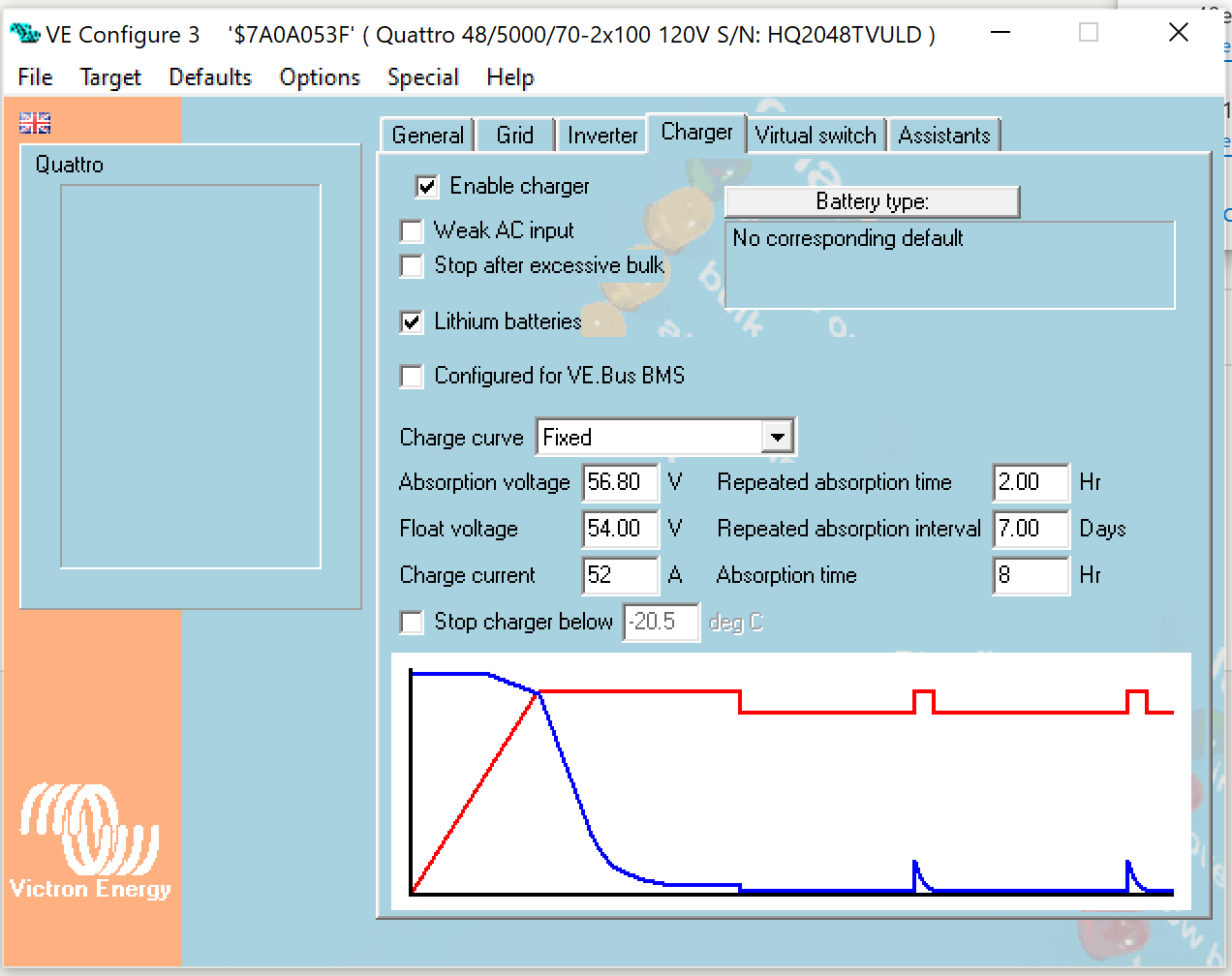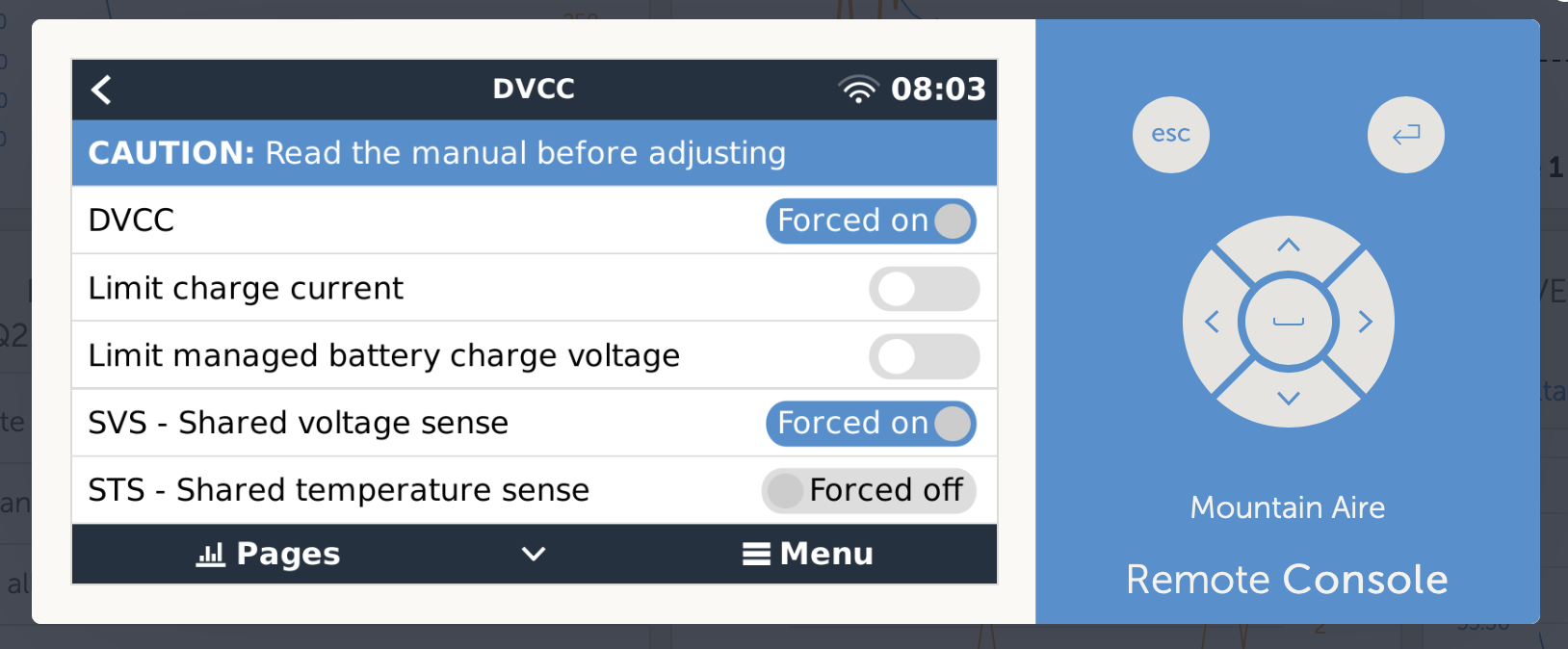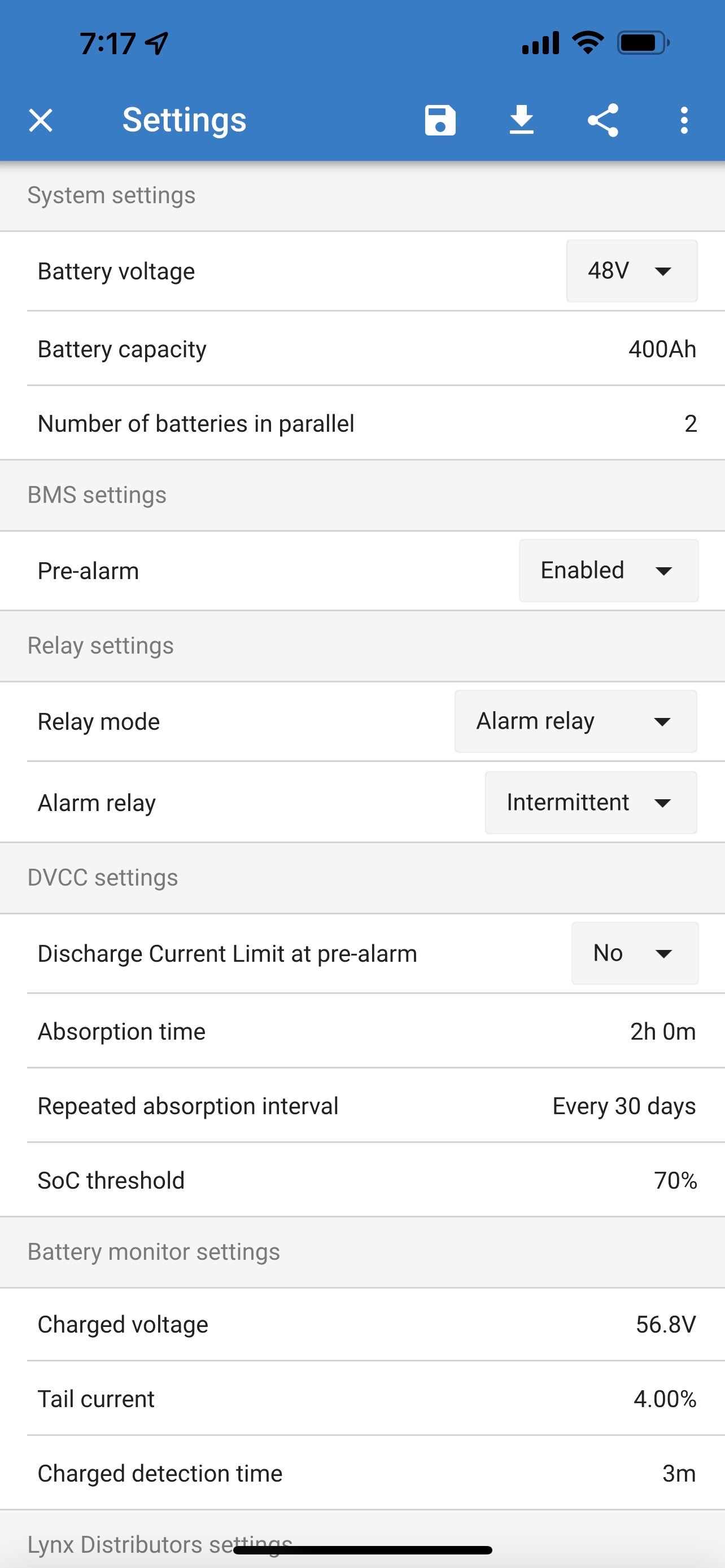
 I am using the Lynx Smart BMS for the first time and need some help understanding its behavior. The system is installed in an RV and consists of 2x 48/5000 Quattros configured in split phase, along with 4x 25.6 200ah Smart lithium batteries in a 48v arrangement.
I am using the Lynx Smart BMS for the first time and need some help understanding its behavior. The system is installed in an RV and consists of 2x 48/5000 Quattros configured in split phase, along with 4x 25.6 200ah Smart lithium batteries in a 48v arrangement.
The Lynx BMS has the following settings:
Charged voltage: 56.8v
Tail current: 4%
Charged detection time: 3 minutes
Absorption time: 2 hours
SoC threshold: 70%
When connected to shore power and the batteries full, the BMS will frequently call for bringing the voltage up to the charged voltage of 56.8v. It will remain there for roughly 20 minutes and then return to float voltage. The timing of this appears to be random, but it seems to occur at least twice per day. Would this be considered normal? What triggers this to occur? I haven't been able to find published information regarding the BMS charging strategy.
When this occurs there is a momentary power outage within the coach. VRM data doesn't show any interruption in input or output power. Logging interval is set to 1 minute, so it may not be fast enough to capture this momentary power loss.

